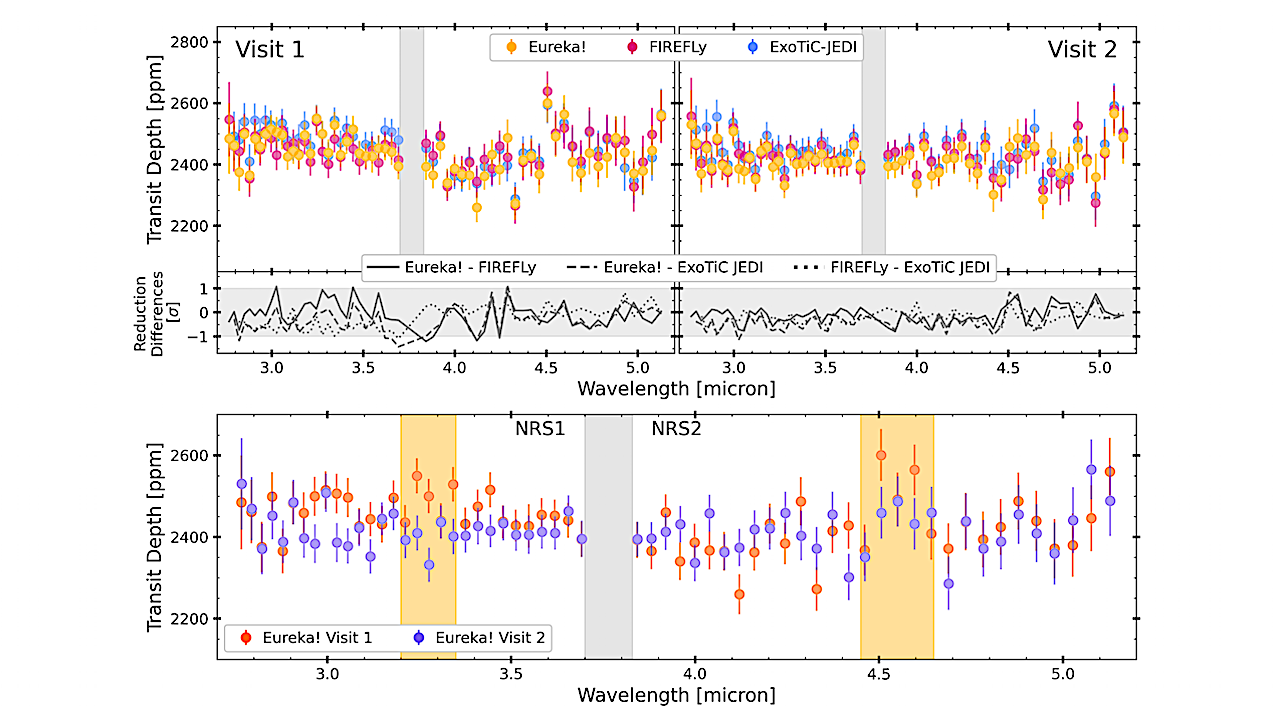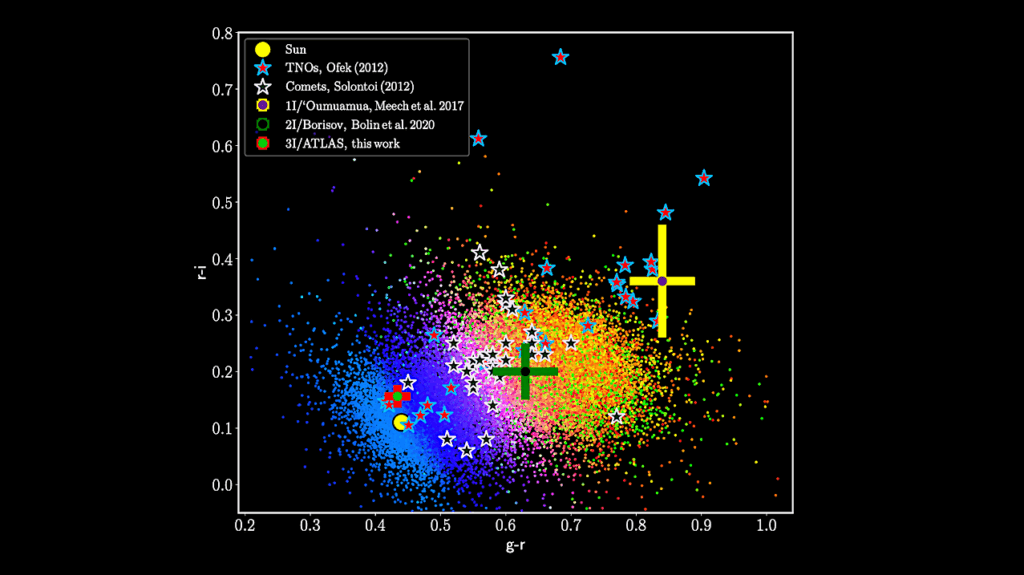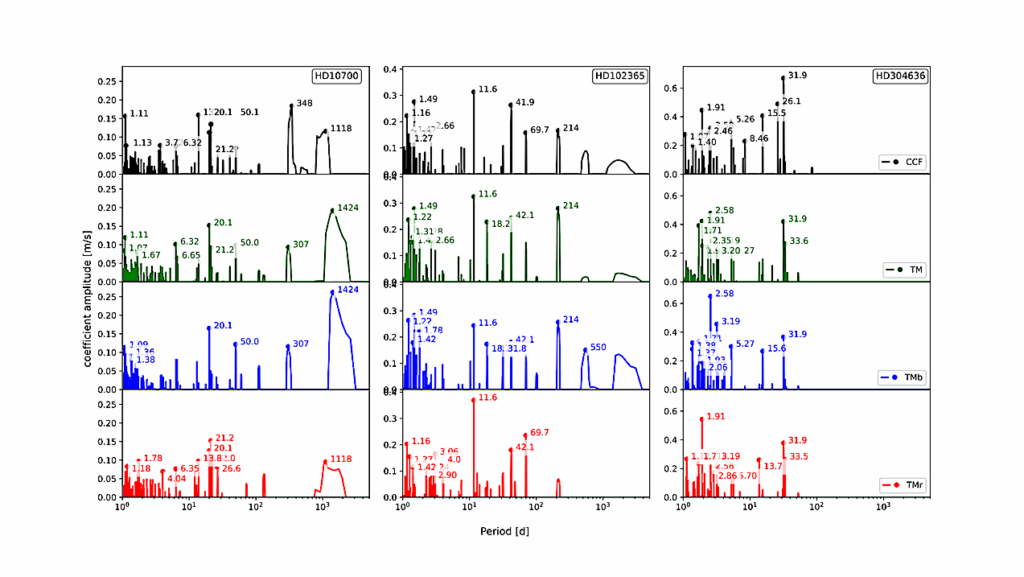Double Trouble: Two Transits of the Super-Earth GJ 1132 b Observed with JWST NIRSpec G395H

The search for rocky planet atmospheres with JWST has focused on planets transiting M dwarfs. Such planets have favorable planet-to-star size ratios, enhancing the amplitude of atmospheric features. Since the expected signal strength of atmospheric features is similar to the single-transit performance of JWST, multiple observations are required to confirm any detection.
Here, we present two transit observations of the rocky planet GJ 1132 b with JWST NIRSpec G395H, covering 2.8-5.2 μm. Previous HST WFC3 observations of GJ 1132 b were inconclusive, with evidence reported for either an atmosphere or a featureless spectrum based on analyses of the same dataset. Our JWST data exhibit substantial differences between the two visits.
One transit is consistent with either a H2O-dominated atmosphere containing ~1% CH4 and trace N2O (χ2ν = 1.13) or stellar contamination from unocculted starspots (χ2ν = 1.36). However, the second transit is consistent with a featureless spectrum. Neither visit is consistent with a previous report of HCN. Atmospheric variability is unlikely to explain the scale of the observed differences between the visits.
Similarly, our out-of-transit stellar spectra show no evidence of changing stellar inhomogeneity between the two visits – observed 8 days apart, only 6.5% of the stellar rotation rate. We further find no evidence of differing instrumental systematic effects between visits. The most plausible explanation is an unlucky random noise draw leading to two significantly discrepant transmission spectra.
Our results highlight the importance of multi-visit repeatability with JWST prior to claiming atmospheric detections for these small, enigmatic planets.
E. M. May, Ryan J. MacDonald, Katherine A. Bennett, Sarah E. Moran, Hannah R. Wakeford, Sarah Peacock, Jacob Lustig-Yaeger, Alicia N. Highland, Kevin B. Stevenson, David K. Sing, L. C. Mayorga, Natasha E. Batalha, James Kirk, Mercedes Lopez-Morales, Jeff A. Valenti, Munazza K. Alam, Lili Alderson, Guangwei Fu, Junellie Gonzalez-Quiles, Joshua D. Lothringer, Zafar Rustamkulov, Kristin S. Sotzen
Comments: 22 pages, 10 figures, 2 tables. Accepted for publication in ApJ Letters. Co-First Authors. Bonus materials and spectral data: this https URL
Subjects: Earth and Planetary Astrophysics (astro-ph.EP)
Cite as: arXiv:2310.10711 [astro-ph.EP] (or arXiv:2310.10711v1 [astro-ph.EP] for this version)
https://doi.org/10.48550/arXiv.2310.10711
Focus to learn more
Submission history
From: Ryan MacDonald
[v1] Mon, 16 Oct 2023 18:00:00 UTC (5,255 KB)
https://arxiv.org/abs/2310.10711
Astrobiology








